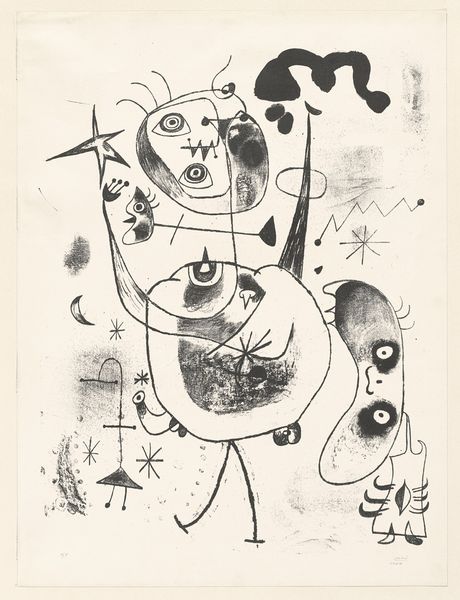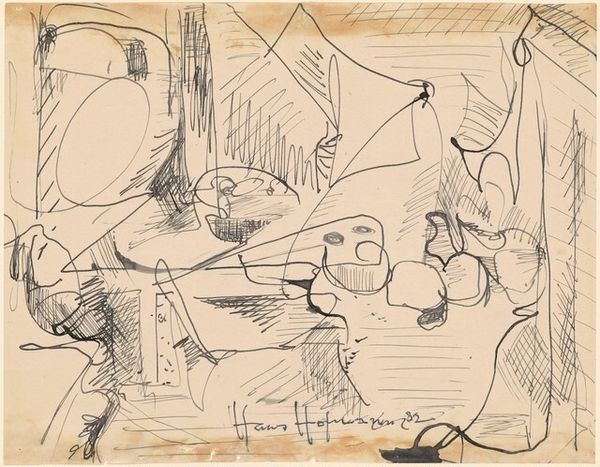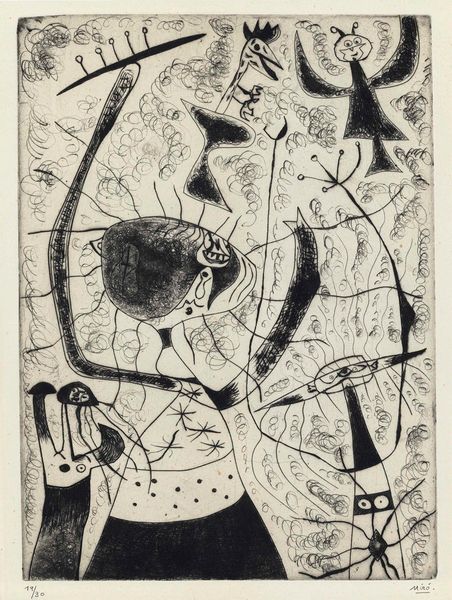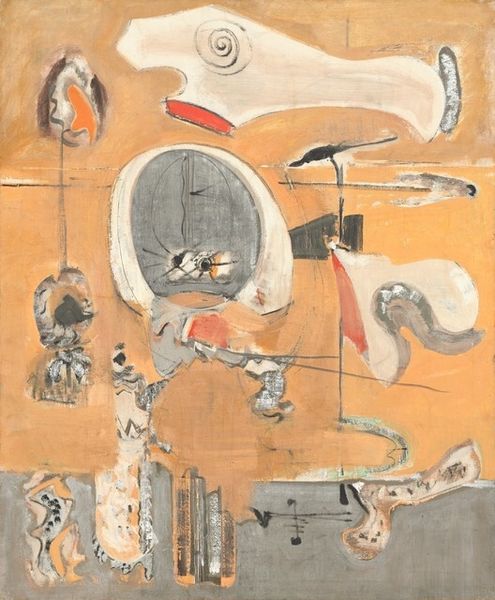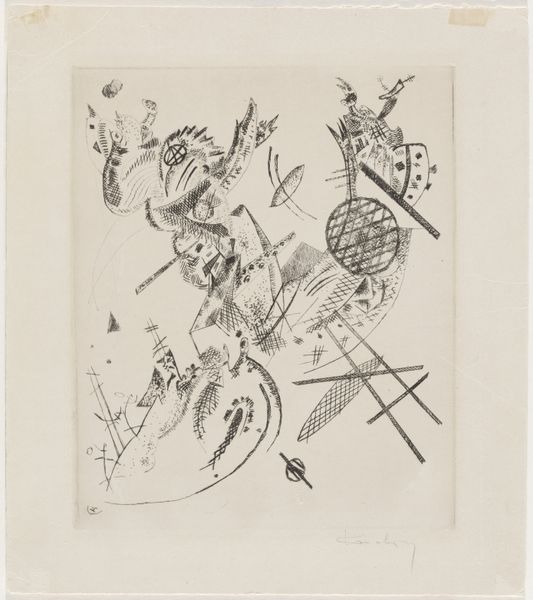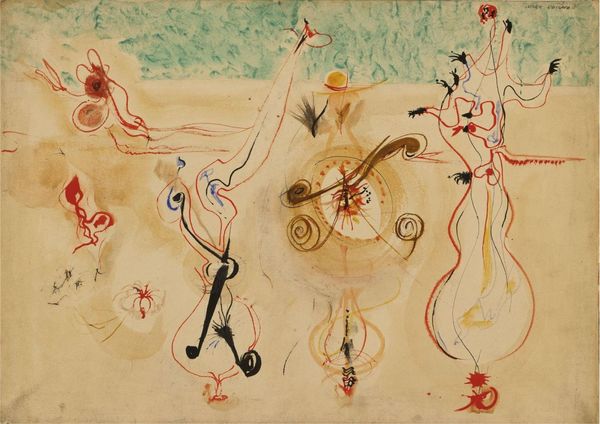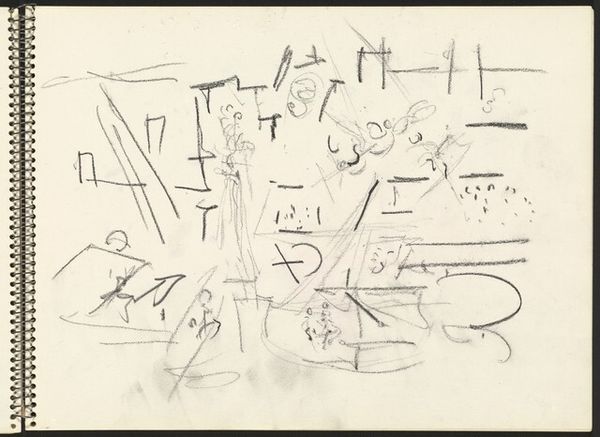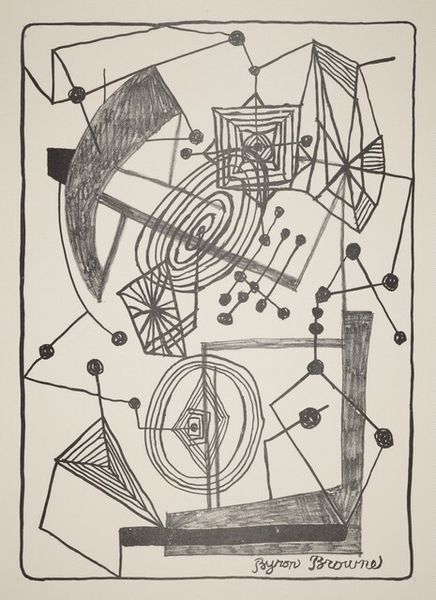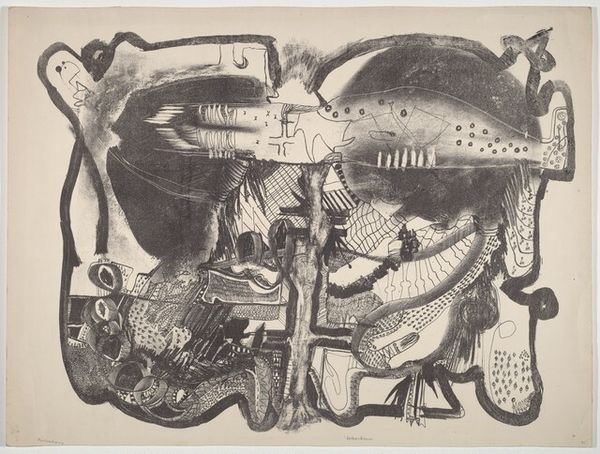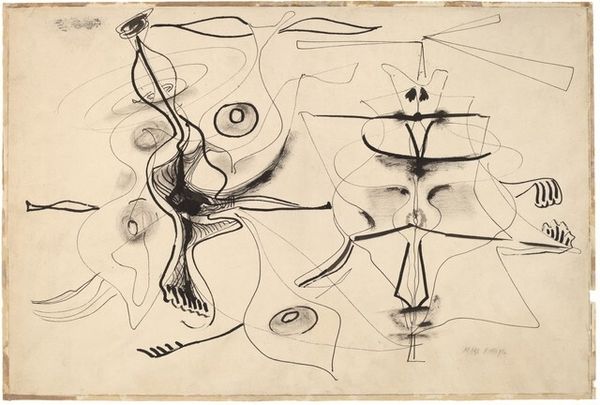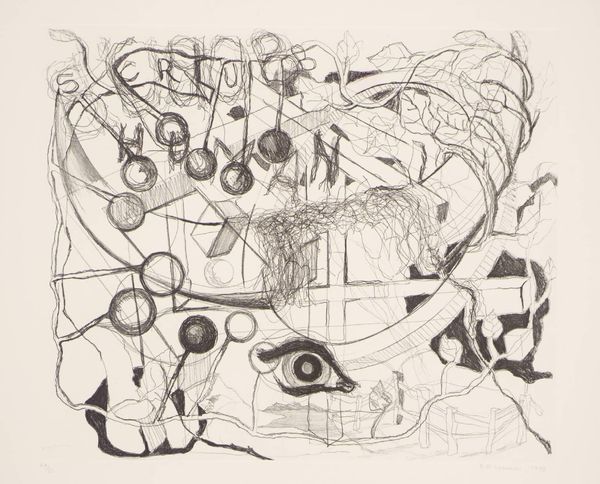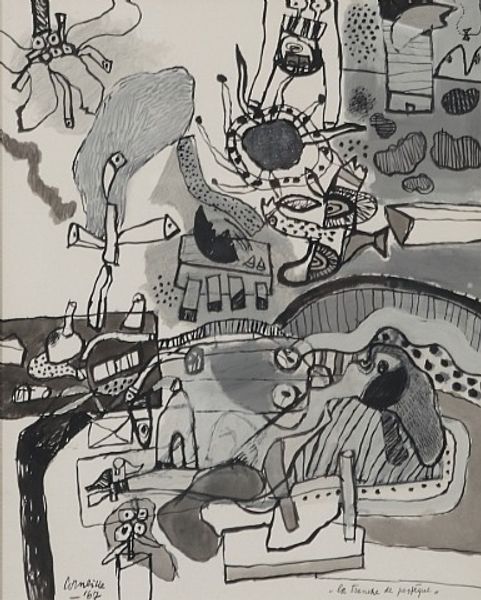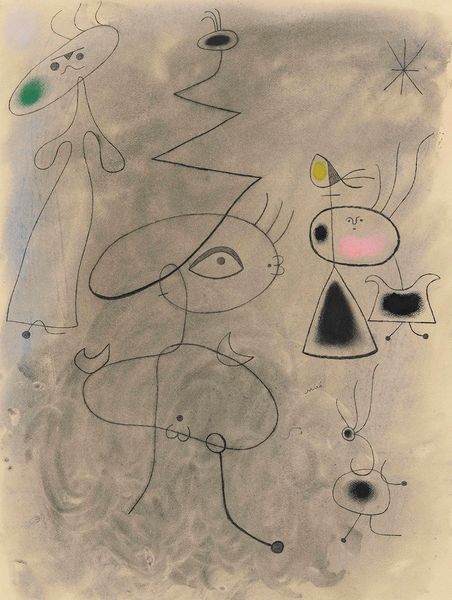
drawing, paper, ink
#
drawing
#
paper
#
abstract
#
ink
#
geometric
#
abstraction
#
surrealism
Copyright: Modern Artists: Artvee
Curator: What a striking drawing! I can stare at Joan Miró's "Final Study for Dutch Interior," made in 1928 using ink on paper, for hours! The playful figures and abstract forms create a captivating energy. Editor: It definitely feels whimsical. The title suggests an interior scene, but it's hard to decipher a traditional room. There are all these curious characters floating in space. How do you interpret this work? Curator: It's essential to consider the socio-political landscape of the time. Miró created this during the Interwar period, a time of massive societal change and upheaval after WWI, which encouraged explorations of new artistic territories. He wasn't interested in portraying a literal interior; rather, he used abstraction to respond to the rise of fascism and the conservative art establishment. These playful, dreamlike figures are a deliberate rejection of those oppressive forces, a call for freedom and imagination. Look at how the geometric forms interact with biomorphic shapes! Editor: So the abstraction is itself a form of resistance? I see how he uses humor to potentially undermine authority. The creatures have a cartoonish quality, like they're mocking something. Curator: Precisely! And considering the grid beneath the sketch: How might we consider it as a space to reimagine more rigid traditional environments? What feelings does it bring about? Editor: That's a good point. The grid adds structure while the figures are almost chaotic and flowing within it. Curator: Think about this in relation to art's broader role. For Miró, it became a vital form of resistance and a means of reclaiming power through symbolic expression. We need to always question the "why" behind stylistic choices, linking artistic expression with lived experience. Editor: This really changes how I see the piece! I thought it was just fun and abstract, but understanding the historical context makes it so much richer and reveals his subtle act of protest. Curator: Exactly! It's a reminder that art never exists in a vacuum and by understanding its roots and cultural landscape, we unveil so much more!
Comments
No comments
Be the first to comment and join the conversation on the ultimate creative platform.
